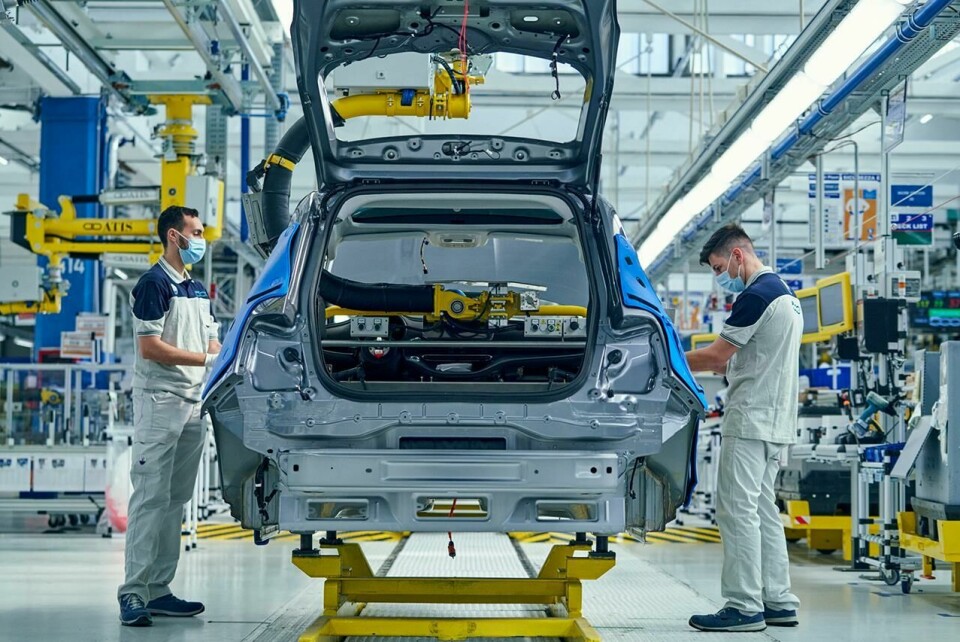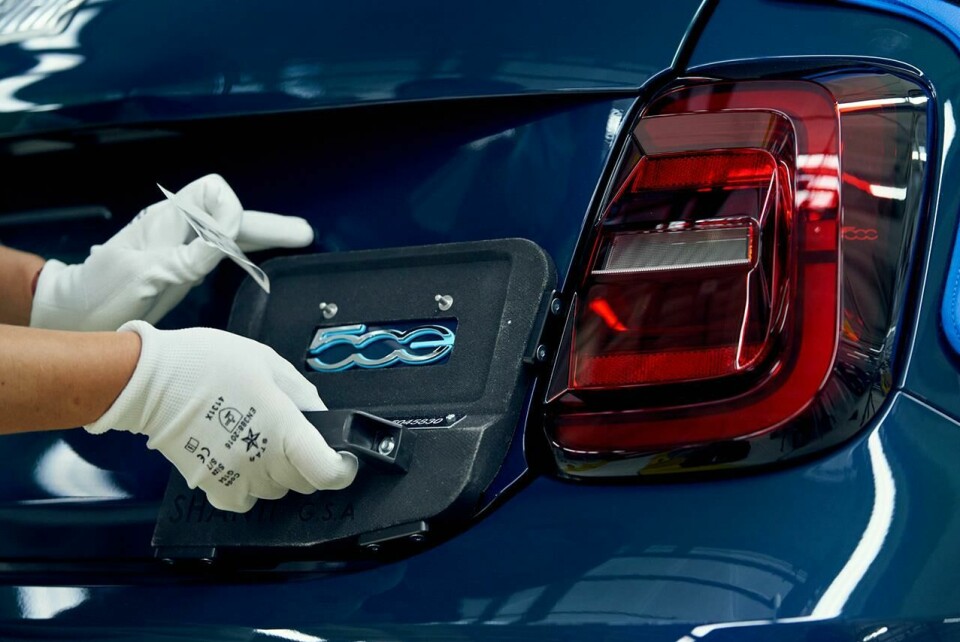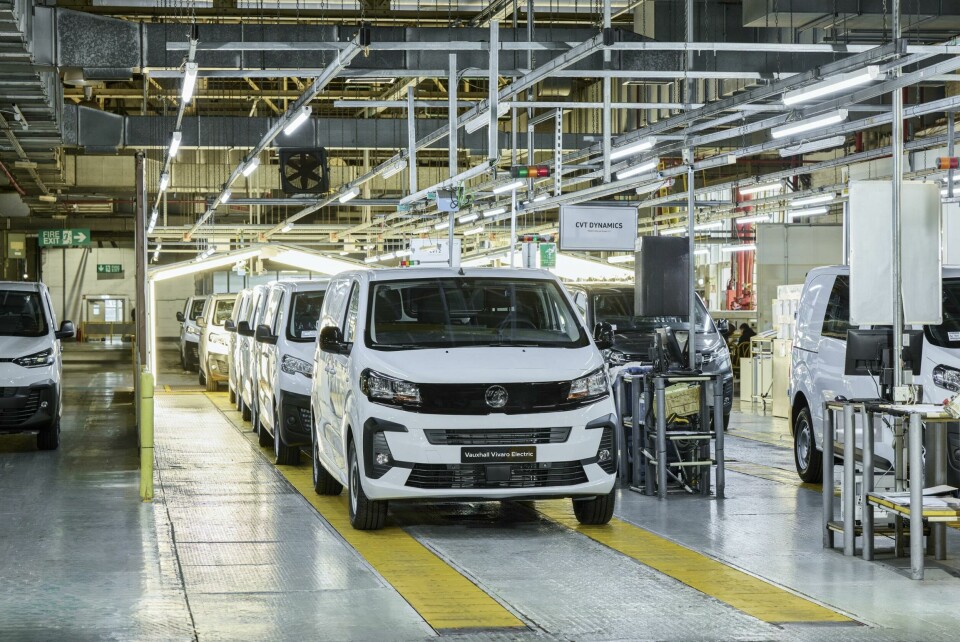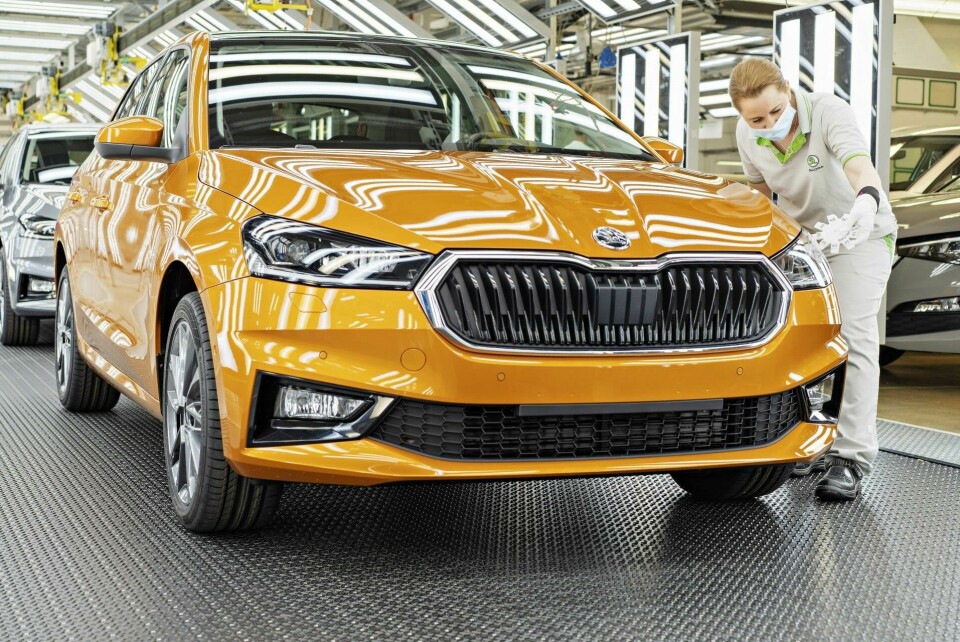
The changing shape of Europe’s automotive production operations
European vehicle manufacturing is having to adapt to weakening EV demand and increasing competition. This means revising production volumes and rethinking the ICE-EV balance in the short term.
Geopolitics and trade policy aside, arguably the key driver behind recent developments in company organisation and changing model allocations between factories or countries is the notable slowdown in EV growth. Economic reality is beginning to impact consumers’ ability and willingness to invest in new EVs. Price parity between EVs and ICE vehicles is still some way off (Nissan for example does not expect this to be reached until 2030), with EVs still sold at a significant premium over their ICE equivalents. This price differential will come down once the volume VMs, Stellantis and Volkswagen especially, introduce new A- and B-segment vehicles, but many of these are still at least a couple of years away. The sub-€25,000 EV, and even the sub-€20,000 version, are coming but they are not yet widely available. However, Chinese imports at this price will almost certainly arrive in Europe before European VMs are ready to produce at this price.

The Chinese are coming to Europe
European VMs’ accelerating moves in the small EV segments are clearly being stimulated by the Chinese VMs’ imports. This in turn has caught the attention of the European Commission which is investigating the degree to which their prices are being unfairly subsidised by the Chinese government. Fearing that additional tariffs might be imposed, the Chinese VMs intend to be one step ahead and are accelerating plans for European production. Although Geely has been present in Europe for some years, through the acquisitions of Volvo, the original London Taxi Co. (now LEVC) and Lotus, the first Chinese VM to come Europe with an all-new purpose-built plant will be BYD (Build Your Dreams) which will open a plant in Hungary in 2026; initial capacity will be 150,000 units per year, but this could be extended or followed by a second plant in Hungary or elsewhere. The Spanish and Italian governments have reportedly been most active in courting BYD and the Chinese VM is expected to make solely EVs in the long run but may also produce hybrids in Europe if the regional slowdown in EV ramp up continues. One issue which is not yet clear is whether the batteries for the EVs will be assembled in Europe from Chinese components or fully made in Europe; the company has been somewhat ambiguous in its public statements to date. Long term, European battery cell production by BYD is certain, but the timing for this is not
”Stellantis has reached agreement with Leapmotor for exclusive sales and production rights for small cars outside China”
With BYD already committed, the question arises regarding which Chinese company will be next and where will they locate? MG (part of SAIC) and Chery are widely understood to be in discussions with European governments about locating in Europe, but how long we might have to wait before any definite decision is made is not clear. Lynk & Co, a new brand from Geely, has been mentioned as a potential European manufacturer, using a Volvo Europe plant, but things have gone quiet on this front in recent times. Lynk & Co production at Volvo was widely regarded as imminent pre-COVID. More likely from Geely now, will be the production of Polestar models at Volvo plants in Sweden and Slovakia; we can expect commitment on this within the next 12-18 months.
Chinese involvement at Stellantis will be symbolic initially and significant longer term
The second Chinese name likely to be confirmed for European production after BYD may well turn out to be a new brand entirely, Leapmotor. Stellantis CEO Carlos Tavares has even gone as far as describing this as Stellantis’ 15th brand. Stellantis has reached agreement with Leapmotor for exclusive sales and production rights for small cars outside China. Press reports have suggested that a replacement for the Fiat 500 electric car could be made on a Leapmotor platform at Fiat’s Mirafiori plant in Turin, although the precise timing for this remains to be confirmed. The possibility of the Fiat 500 electric being replaced by a Leapmotor platform highlights the difficulties facing European VMs in developing and producing small EVs at sub-€20,000 prices. Borrowing from the low-cost engineering and parts from China will no doubt help, and most recently, reports have emerged of a small Leapmotor car being assembled by Stellantis at the Fiat Tychy plant in Poland, using CKD kits from China. Volumes and timing for this are unknown but if this happens it would be an interim prelude to the idea of an all-new Leapmotor model being made by Fiat in Italy.
While Leapmotor models will be made by Fiat and Lynk & Co or Polestar models would be made in Volvo plants, for other Chinese VMs the issue is whether to build all new plants immediately or try to reduce their upfront investment costs by starting in Europe with a contract manufacturing arrangement. The CEO of Valmet in Finland has been vocal in suggesting this as a possibility, which is not surprising as Valmet will soon lose most of its contract manufacturing work for Mercedes. Other contract manufacturers who might bid for production for the Chinese would be VDL in the Netherlands now that Mini production there has all but ended, and even Magna which will soon lose its Jaguar E-PACE and I-PACE contracts, and its low volume BMW 5-series hybrid contract.

An ICE version of an EV?
Returning to the issue of Stellantis’ small EV programme, in a remarkable and unexpected twist, Stellantis may well both extend the 500 electric’s life and add a hybrid powertrain option. Were this to come about it would be the first case of an EV moving back into ICE or at least hybrid configuration. The 500 electric looks similar to the old 500 made in Poland but is made on more modern platform and Stellantis could not extend the life of the original Tychy-made model without excessive re-engineering costs. Hence the idea of adding an engine to the more modern 500 electric, but why might Stellantis do this? There are several possible reasons. Firstly, the slower than expected ramp up in EV volumes, allied to consumer reluctance to switch to EVs, in turn generating unexpected, continued demand for ICE or at least hybrid models. In addition, there are some unique political and union factors at work in Italy.
Production volumes at Fiat’s Mirafiori factory, where the 500 electric is made, have been declining for some time and union pressure to avoid job cuts is intensifying. Reportedly Fiat has recently asked suppliers to quote for supplying the 500 at Mirafiori at a rate of 175,000 units per year, around 100,000 more than the 500 electric model has sold in recent times. Fiat has not confirmed this, nor has it commented officially on reports of the idea of adding a gasoline engine to the electric model, but the idea does have some clear logic as it would meet demand, save jobs and would meet with the approval of the Italian government. Led by the right-wing populist Georgia Meloni, the Italian government is keen to show its support for its political base in the working class, even if the government itself is not especially pro-union. Sensing the direction of the prevailing political winds and recognising the economic consequences of the slower than expected switch to EVs, Stellantis may see an opportunity, at least in the short term, to maintain Mirafiori’s utilisation, keep the unions on side and not lose the confidence of the Italian government, which had recently been talking of taking a stake in the company.
”Volkswagen too is engaged in moving vehicles from plant to plant and trying to optimise factory utilisation, while coping with the stuttering start to EVs as mass market products”
Arrivederci Panda, ciao Pandina
Stellantis has also changed its production plans for another Fiat model in light of the slow switch to EVs. The venerable Panda will see its life extended to at least 2026. This will involve a change of name, to Pandina, to differentiate it from the new Panda which will be all-electric and will be made in Serbia, alongside some electric Citroen eC3s, the bulk of which will be made in Slovakia. The Pandina will remain in production at Pomigliano d’Arco in the south of Italy, alongside the Alfa Romeo Tonale small crossover and the Dodge Hornet sibling. This decision has been facilitated by the decision of the European Commission to cancel the application of Euro 7 emissions rules; instead, the current Euro 6 rules will remain largely in place (although they will now be called Euro 7), meaning that the original Panda and its powertrains can be retained. These rules should also allow other VMs, notably Volkswagen and Skoda to retain the Polo and Fabia respectively should they take the same view on the implications of the slow take-up of EVs at Stellantis.

More electric vans in the UK
One other interesting development at Stellantis concerns the Luton van plant in the UK. Despite the disappointing volumes of small electric vans so far made at Ellesmere Port, and the new capacity for the larger van of the type made in Luton now coming on stream at Tofas in Turkey, Stellantis has confirmed that Luton will make electric vans in Luton from the second half of 2025. Whether it is in cars or vans, in Italy or Poland or elsewhere, Stellantis continues to move vehicles around its dispersed manufacturing network and more moves can confidently be predicted, albeit with the precise models and factories involved remaining a mystery for now.
Volkswagen re-allocating models too
Volkswagen too is engaged in moving vehicles from plant to plant and trying to optimise factory utilisation, while coping with the stuttering start to EVs as mass market products. While its German plants focus on the ID EV range, the Passat has been retained in ICE format but will be made in Slovakia alongside the Skoda Superb, which itself moves from a Czech plant. The timing for the end of production of the Volkswagen Polo and Skoda Fabia, two very closely related models, has yet to be confirmed. The Euro 7 rule changes means these could be retained for a while longer. While Volkswagen debates the future of these models, it is worth noting how small EV production for Volkswagen Skoda and Cupra (the new brand which is taking over from SEAT) is being organised.
Using a shortened version of the MEB platform, the first steps here will involve four models being made in Spain, two at Volkswagen’s Pamplona site (the VW ID.2 SUV and Skoda Epiq, another small-SUV) and two at SEAT’s Martorell plant (the VW ID.2 car and the Cupra Raval). In the short term at least, Pamplona will continue to the make the ICE-powered Polo car and Taigo and T-Cross small SUVs. These models will no doubt ultimately be cut but it would not be surprising to see the Polo and its SUV siblings continue for a while yet; and at Martorell, the new EVs will use a dedicated assembly line (there are currently three lines there) and should not impact the continued production and sale, subject to demand, of the SEAT Arona, Ibiza, Leon and Cupra Formentor. More significant for Volkswagen will be how it manages to produce the smaller ID.1 and related models for its other brands. Cost considerations are understood to make it difficult, if not impossible, to use a cut-down version of the MEB platform used for the ID.2 and with this in mind, reports have emerged of Volkswagen licensing small EV technology from Renault, specifically the new small car platform which will be used to produce the Renault Twingo replacement in Slovenia.
Ford delays EV plans for Spain
Uncertainty regarding the ramp up in EV production in Europe has led Ford to revise its plans for EVs and battery production. It has slowed European EV investment, delaying the introduction of new EVs in Spain, having already stopped ICE car and small van production in Valencia. EV investment in Spain will still take place but when remains to be seen. For now, it will make only the ICE or hybrid Kuga SUV meaning that utilisation at the Valencia plant will be less than 50% until the new EV models are launched. Ford has also scaled back battery plant plans, delaying a new battery assembly plant in Turkey, although new battery plants in association with Korean battery companies to supply EVs made in Cologne and Craiova in Romania will continue.
Mercedes will make ICE vehicles into 2030s
The short-term continuation of ICE production of small vehicles at Fiat will be mirrored in some larger vehicles too: Mercedes’ CEO Ola Källenius has recently said the company will continue to make ICE models well into the 2030s. Meanwhile BMW is accelerating its EV switch, it can make EVs and ICE models on the same lines in Germany and is thereby hedging its bets. Its new factory at Debrecen in Hungary will be a dedicated EV facility, making SUVs on the Neue Klasse platform, but elsewhere at BMW a mix of EV and ICE production will remain for now. While there may not be much in the way of major investment in ICE production and no new engines are being developed, many existing powertrains have a decade or so more life left in them, especially in the light of the now less onerous than expected Euro 7 emissions rules.

And Europe will export ICE vehicles after 2035 sales ban
Markets outside Europe, but which are supplied from European factories, will continue to use ICE vehicles. Renault has decided to focus EV production in France and Slovenia (using dedicated EV platforms), and hybrid and some EV variants using hybrid underpinnings in Spain, but both Dacia in Romania and Renault itself in Turkey will continue to make ICE vehicles. The Turkish plant moreover will become an export hub for serving the Near East, former CIS markets and Africa. These markets are also well behind Europe in terms of EV infrastructure and consumers’ affordability measures when it comes to buying an EV.
European OEMs maintain a flexible approach to powertrains
European vehicle production is an interesting stage as it moves along the path to full electrification. The process is going to be slower than expected even a couple of years ago; and for this reason, many European VMs will retain ICE or hybrid production for longer than had been thoughts to meet consumer demand, maintain sales volumes and avoid plant closure and redundancy costs. This certainly seems to be case at Stellantis and behind the announcement that Mercedes will continue to make ICE models into the 2030s. Even Volvo, which has committed to going fully electric by 2030, has hinted that it may delay this for a while as it adds more PHEV capacity in response to customer demand. Bentley too has decided to delay its first EV by a year, may be longer, and increase PHEV production. It will now continue to make PHEVs into the 2030s, not least because it will need longer to recover the increased investment it is now making in PHEV production. What once seemed a clear and steady linear switch to EVs is proving to be anything but straightforward and will no doubt see many more twists and turns along the road.


